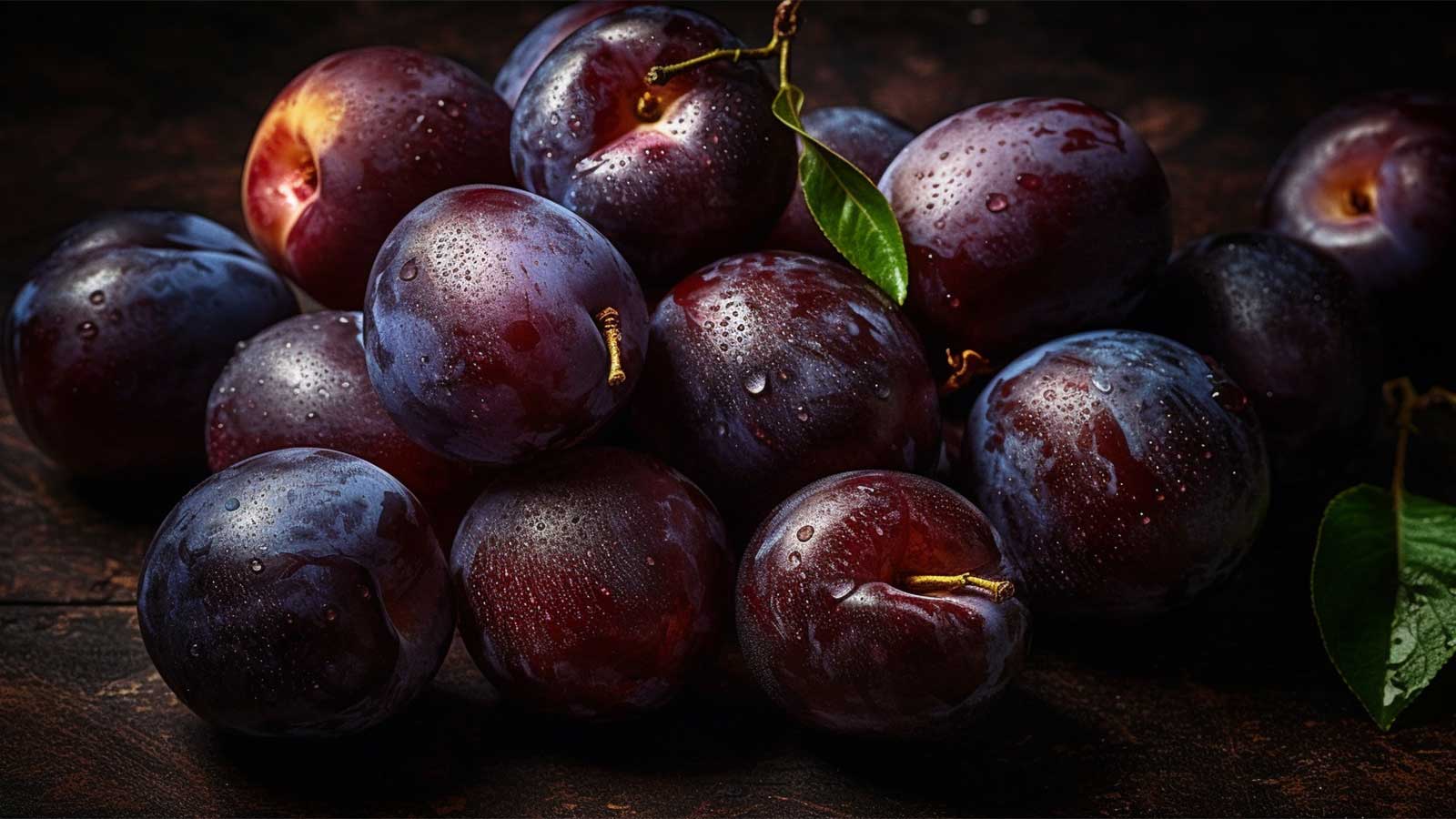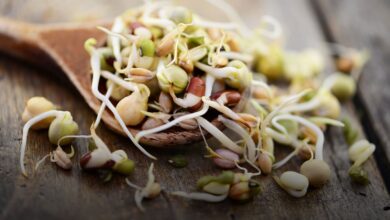Unexpected benefits of prunes and plums

Ah, peaches! These delicious and juicy fruits that delight us on sunny days and that are the source of countless recipes and tales. I invite you to discover in this article this fruit from the drupe family, which we eat at the end of summer, as it is very appreciated and beneficial for our health. We will review the most common types of plums, their taste characteristics, and their uses in cooking.
We will also highlight the nutritional benefits of prunes and prunes, the dried alternative. Prepare yourself for a captivating and gourmet journey through the world of this essential fruit.
History and origins
Tree of a thousand fruits
Plums come from the plum tree, a fruit tree in the Rosaceae family, which has more than 2,000 species of fruit around the world. Plum trees originated in Asia Minor and the Caucasus region, where they have been grown for thousands of years. Indeed, we find traces of plum tree cultivation dating back to the Bronze Age, around 3000 BC. advertisement
Plum trees then invaded Europe, where they have been cultivated since ancient times. The Romans, big fans of peaches, spread them throughout their empire, and this is how this delicious fruit conquered the world!
Image source © Docteur-Fitness.com
Delicious story
Over the centuries, plum trees have been selected and hybridized to give rise to many plum varieties, each with its own characteristics and uses.
Plums have also been used in traditional medicine and pharmacopoeia, especially for their laxative properties. You may have heard the expression “plums are not worth talking about” something worthless. Well, this expression comes from the fact that plums were once used to make a cheap medicine for constipation!
Varieties and characteristics
Basketball stars
Among the countless plum varieties, some of them take the lion's share of our dishes:
- Ente plums, also called Agen prune, are highly prized for their melting and sweet flesh. It is often eaten dried in the form of peaches.
- Damascus plums, with their firm, juicy flesh, are ideal for jams.
- Victorian plums, so common in England, are ideal for pies and clafoutis;
- Quiche, the star of the orchards of Alsace-Lorraine, is the queen of jams and pies;
- Small and golden, the Mirabell plum is a true treasure of Lorraine, the pride of gourmets.
Each one has its own personality
Plums offer great variety in colours, shapes and flavours:
- Colors : From the golden yellow of the Mirabelle plum to the dark purple of the Kitsch, through to the bright red of the Damascus plum;
- Shapes Round, oval, elongated…there's something for everyone! ;
- Flavors Sweet, refreshing, aromatic… Each variety has its own identity.
- Specific uses : Some plums are best fresh, others dried, and some are particularly suitable for making jams, pies or compotes.
Culture and production
The secret of plum trees
Growing plum trees is a bit like raising children: you have to pamper them, protect them, and help them grow. Here are some tips for budding gardeners:
- Planting and care Choose a sunny location and well-drained soil for plum trees. Water it regularly, especially during dry periods;
- Size systems Plum trees prefer light pruning in winter to encourage fruiting. Be careful not to prune it too hard, as this may weaken it;
- Pollination To ensure a good harvest, plant several compatible plum tree species to encourage cross-pollination;
- Disease and pest management : Monitor plum trees carefully and treat them prophylactically against diseases and parasites, such as canker or cochineal disease.
From the garden to the plate
These summer fruits delight producers and consumers around the world:
- Main producing countries : China, the United States, Serbia and France are the largest plum producers.
- International and local market : Plums are traded in global markets, but are also very popular in local markets, where they delight gourmets and discerning palates;
- Labeling and certifications : Some plum varieties, such as the Lorraine Mirabell plum, benefit from a Protected Geographical Indication (PGI) that guarantees their origin and quality;
- Trends and innovations : New production methods, such as agroforestry or sustainable agriculture, make it possible to grow plum trees while respecting the environment and biodiversity.
Culinary uses
Go to your stove!
Plums inspire the greatest chefs and Sunday cooks:
- Sweet recipes : Jams, pies, compotes… Plums are suitable for all fantasies;
- Delicious recipes : Sauces, sauces…and peaches add a touch of originality to your dishes;
- Prunes and other derived products Plums, these sun-dried plums, are a real powerhouse of energy and flavour.
Nutritional benefits
Not only are plums delicious, they are also excellent for your health in many ways. Let's discover together the hidden virtues of this colorful little fruit.
Vitamins and minerals
Plums are rich in vitamins and minerals necessary for our body. In particular, we find:
- Vitamin A, which contributes to healthy skin, eyes and immune system;
- Vitamin C, which strengthens the immune system, enhances iron absorption and has antioxidant properties;
- Vitamin K, which plays a crucial role in blood clotting and bone health;
- Potassium, which contributes to the proper functioning of cells, nerves and muscles;
- Iron is necessary for the production of red blood cells and the transport of oxygen in the blood;
- Calcium, which contributes to the formation and strength of bones and teeth.
Fiber and antioxidants
Plums are also an excellent source of fibre, which facilitates intestinal transit and contributes to a feeling of fullness.
In addition, they contain many antioxidants, such as polyphenols and carotenoids, which help neutralize free radicals responsible for cell aging and many diseases.
Health effects
Regular consumption of peaches may have beneficial health effects, such as:
- Slightly laxative effect, especially thanks to the presence of sorbitol, which enhances intestinal transit.
- Reducing the risk of cardiovascular disease, thanks to its antioxidant and fiber content.
- Preventing some diseases, such as cancer, due to its richness in antioxidants and phytochemical compounds.
Plums: a center of energy and flavour
Plum is a dried fruit obtained from certain types of plum, especially Plum Enti. It is very popular because of its soft texture and sweet taste. But plums are not only delicious, they also have many health benefits.
An ally of the digestive process
Prunes are known to facilitate intestinal transit and prevent constipation. In fact, its high fiber content, especially insoluble fiber, helps regulate transit and improve digestion. In addition, plums also contain sorbitol, a sugar alcohol that has a natural laxative effect.
Energy and vitality
Prunes are an excellent source of energy, thanks to their content of simple and complex carbohydrates, which are quickly absorbed by the body. Therefore, it is particularly suitable for athletes and people who need a boost of energy.
Richness of nutrients
Plums are also rich in vitamins and minerals, especially B vitamins, which contribute to the proper functioning of the nervous system and energy production, as well as potassium, which is necessary for the balance of fluids in the body and proper muscle function. And nerves.
Antioxidants
Like prunes, plums contain many antioxidants, such as polyphenols and carotenoids, which help fight free radicals responsible for cell aging and many diseases.
Culinary uses
Plums are a versatile ingredient in cooking and can be used in both sweet and savory dishes. It goes perfectly with meat, such as lamb or pork, and adds a touch of sweetness and flavor to many desserts, such as pies, cakes or compotes.
The last word
I hope this article about plums and prunes has informed you about the richness of this fruit and its many benefits for our health. Feel free to incorporate prunes and prunes into your diet and try new recipes to take full advantage of their flavors and properties. I wish you an excellent tasting and look forward to future gourmet and informative discoveries.
(Tags for translation) History and origins
Unexpected benefits of prunes and plums


